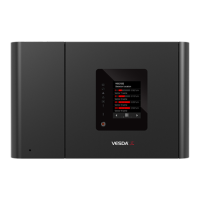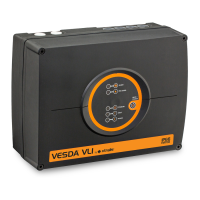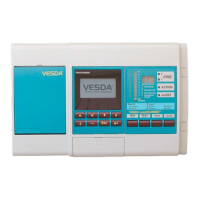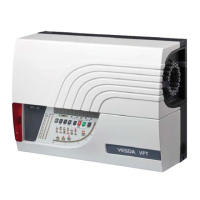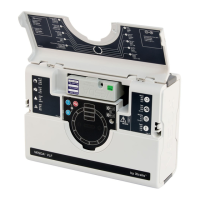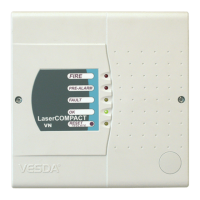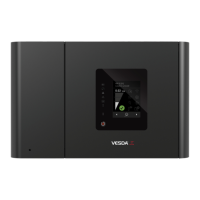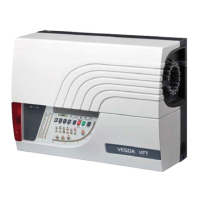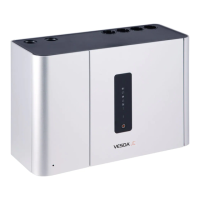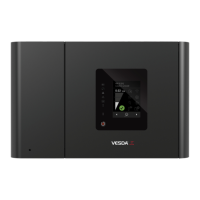LaserFOCUS VLF-500 Product Guide VESDA
®
24
Commissioning smoke test
It is recommended that a smoke test be carried out to prove the integrity of the pipe network, to
demonstrate that the system is working and to measure the transport time to the detector.
This test involves introducing a smoke sample at the furthest sampling hole and then measuring
the time taken for the smoke to travel to the detector. Results are logged and compared to
subsequent tests to note variations of the system.
See the VESDA System Design Manual for details of the commissioning smoke test.
1.6 Detector Overview
Features
• Laser Based Absolute Smoke Detection
• Wide Sensitivity Range
• Programmable Alarm Thresholds
• Dual Stage Air Filtration
• Instant Recognition Display
• Instant Fault Finder
TM
• AutoLearn
TM
Smoke
• AutoLearn
TM
Flow
• Ultrasonic Flow Sensing
• Referencing (requires a VESDAnet Interface Card)
• Field Service Access Door
• Separate Event Logging
• Pipe Modeling Support Software – ASPIRE2
TM
• VESDA System Configurator (VSC) for field support
Description
The Instant Recognition Display of the VESDA LaserFOCUS smoke detector shows alarm levels
and detector status information. The Smoke Dial, (see (F) in figure 23, “LaserFOCUS detector
front view,” on page 26, a part of the Instant Recognition Display, provides clear information of a
smoke event, relative to the Fire 1 Alarm Threshold. This display also identifies system and
operational faults, when using the Instant Fault Finder function. Each segment of the Smoke Dial
also corresponds to a specific fault condition.
A Field Service Access Door is provided to allow easy access to AutoLearn functions for detector
commissioning. It provides access for filter replacement and connecting a PC for comprehensive
configuration and diagnostics processes.
The detector uses Ultrasonic Flow Sensing to monitor the integrity of the sampling pipe network
by detecting pipe air flow change. Ultrasonic flow sensing is not affected by temperature,
humidity or pressure.
Detector history is provided by the non-volatile Event Logging feature. Smoke trend data, flow
trend data, fault events, configuration events and operational events are recorded. Using VSC
these event types can be filtered individually.
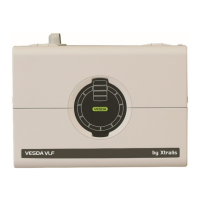
